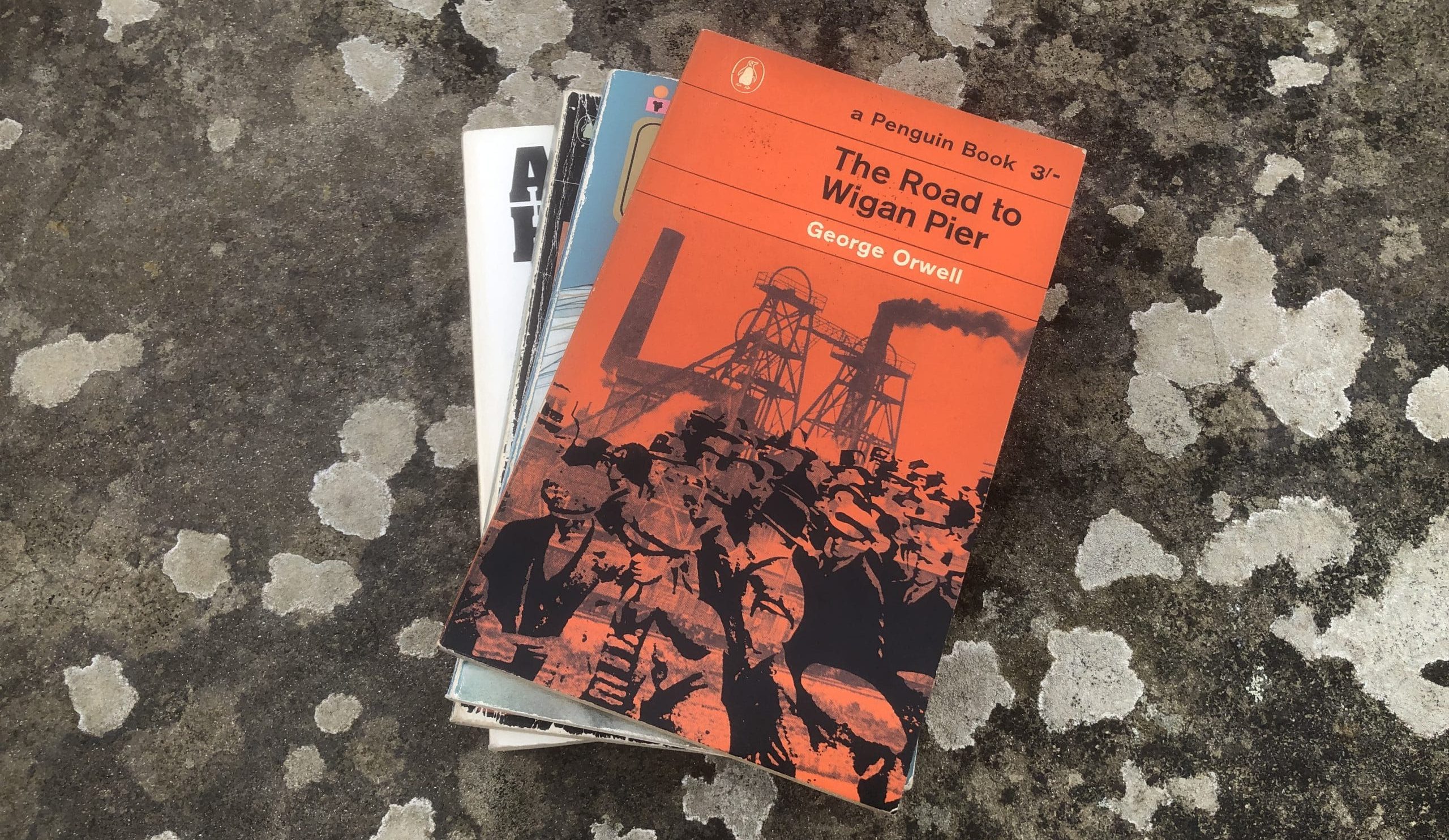 John Brooks is a retired general practitioner with an interest in the medical humanities.
John Brooks is a retired general practitioner with an interest in the medical humanities.
George Orwell wrote two hugely influential books: The political satire Animal Farm [1944] and the dystopian Nineteen Eighty-Four [1949]. Recently I read some of his other works. The title of The Road to Wigan Pier [1937] had always fascinated me. I found what I was looking for when I reached the last paragraph at the end of chapter four: “In respect of the celebrated Wigan Pier, which he had set his heart on seeing Alas! Wigan Pier has been demolished, and even the spot where it used to stand is no longer certain.”
The first half of the work is a factual description of Orwell’s sojourn in working class homes in the North of England.
Wigan’s favourite son George Formby managed to revive interest in the subject in the 1940’s. There is obviously much more in the book than Wigan Pier. The first half of the work is a factual description of Orwell’s sojourn in working class homes in the North of England. Here we find his admiration for the sheer physical work performed by miners at the coal face under very dangerous conditions. Problems associated with housing and unemployment are discussed in detail. The prose style is simple, immediate and precise. The second half of the treatise focuses on Orwell’s views on Socialism and Fascism.
When did George Orwell [real name Eric Blair born in Bengal 1903] begin to embrace Socialism? There were a series of events which deeply affected him. As a scholarship boy he was considered bright but somewhat aloof. Orwell harboured a deep resentment against the richer echelon in school. He was grateful that Eton encouraged independent thought but, an avid reader, he rested on his laurels and flunked his exams. Any chance of going up to Oxford was out of the question. Joining the Imperial Indian Police force and a posting in Burma [Burmese Days, 1934] seemed to be his career route. Surprisingly he resigns after five years service with a hatred of autocracy and the colonial system.1 George Orwell’s next adventure, after leaving a secure tenure, is to mix with the low life as an impecunious writer [Down and Out in London and Paris, 1933]. By the time Orwell went to live in Northern England, to gain background for his Wigan Pier research he was a confirmed Socialist. In “Why I Write” Orwell states:
“Every line of serious work that I have written since 1936 has been written, directly or indirectly, against totalitarianism and for democratic socialism, as I understand it”. In trying to reach for the stars he became a social saint according to his friends.2 When he travelled to Spain it was originally as a journalist and then as a volunteer in the Spanish Civil War. The experience strengthened his views on socialism further [Homage to Catalonia, 1938].
George Orwell never had the best of health, starting in childhood with bronchitis.
George Orwell never had the best of health, starting in childhood with bronchitis. As an adult he contracted dengue fever in Burma and when back in Europe he had bouts of pneumonia and bronchiectasis, possibly related to his heavy smoking. Tuberculosis was still a common disease in the 1940s.3 In 1947 Orwell joined an illustrious group of writers who had succumbed to consumption.4 He was to spend seven months in Hairmyres Hospital in Glasgow with tuberculosis of the lungs. Treatment started with the standard artificial collapse of the lungs and bed rest. Exciting new antibiotics for combating TB were discovered in 1944. With the help of his publisher, David Astor, Orwell managed to get a supply of Streptomycin from America (it was not freely available in the U.K).5 After initial improvement in his symptoms the Streptomycin had to be stopped due to acute dermatitis and stomatitis. However, Orwell’s illness did eventually improve and he was able to return to his previous harsh life on Jura in his isolated cottage. Here he was able to finish his novel Nineteen Eighty-Four after many trials and tribulations. A relapse in his condition led admission to University College Hospital in London. Plans were made for a trip to a sanatorium in Switzerland in the New Year together with an idea for another novel. It was not to be as George Orwell died on 21 January 1950, age 46, following a pulmonary haemorrhage. Just a few years later the treatment for tuberculosis began to improve. In 1952 triple-therapy resulted in predictable cures of 90-95%. By the 1960s the introduction of ethambutol reduced the length of treatment resulting in better compliance.6
References:
- GEORGE ORWELL: A LIFE, Bernard Crick, Martin Secker & Warburg 1981
- GEORGE ORWELL, A Literary Study by John Atkins, John Calder 1954
- Citron K, My life in relation to the history of tuberculosis, 20/07/19 https://www.whittington.nhs.uk/default.asp?c=37325 (accessed 28/4/22)
- John Self, TB or not TB: the literature of consumption, The Critic March 2022
- Bastian H, Down and almost out in Scotland: George Orwell, tuberculosis and getting streptomycin in 1948, J R Soc Med, 2006 Feb: 95-98
- Iseman MD, Tuberculosis Therapy: past, present and future, Eur Respir J 2002 20 Suppl.36 Tuberculosis Therapy: past, pres 87-94 https://erj.ersjournals.com/content/20/36_suppl/87S
Featured image: Paperbacks on stone by Andrew Papanikitas, 2022






